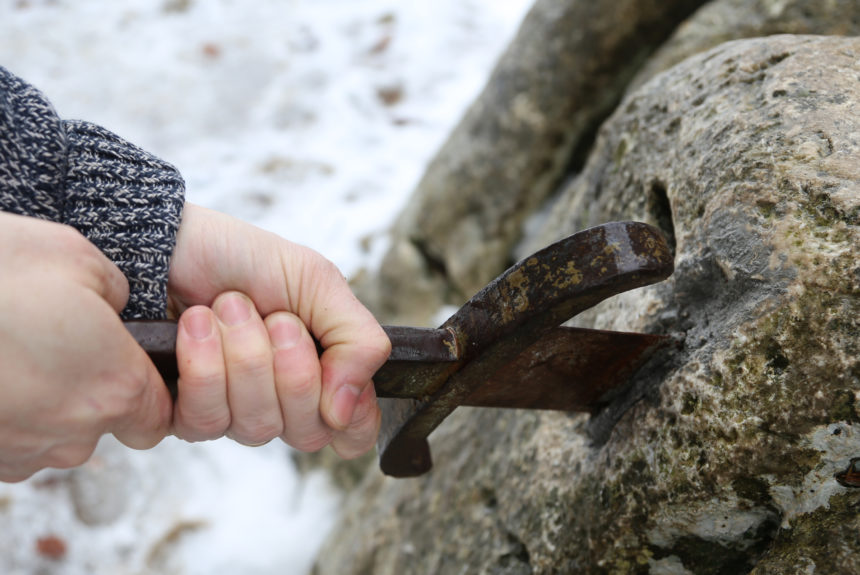According to Arthurian History
There are really no manuscripts or books historically that reference King Arthur’s drawing a sword from a stone, Excalibur or otherwise. And yet, there is one connection that might make sense: The Latin word for sword is Saxo and the English word for the Germanic invaders who took over the country is Saxon. It is very possible that the story of King Arthur killing a great Saxon leader and taking his sword as a symbol of prowess and renewed vigor and victory was the connection between King Arthur and the sword in the stone. In addition to that connection, it’s also possible that in transcribing the story, a writer might have forgotten to add a letter, namely the last, to the word Saxon. Hence, “Arthur pulled the sword from the Saxon” may have become “Arthur pulled the sword from the stone.” No one knows for certain how this story originated historically, but it has played in important part in the link between Historical Arthur and Legendary Arthur.
An alternative to this connection might be the fact that in Roman times, the empire conquered the Sarmatians, people who lived on the steppes of Russia. Many of the defeated Sarmatian warriors were sent to protect Roman forts in Britain. Part of the Sarmatians’ religious beliefs centered on the image of a sword thrust into a platform of stone. The commander of the Sarmatian troops in Britain was named Artorius, the Latin form of Arthur. The idea of Arthur’s drawing the sword from the stone could have had its origins in the religious beliefs of the Sarmatians, some of whom would have been left behind when the Romans suddenly left in 410.
Also, one of the Sarmatian folktales tells of a great hero named Batradz who owned a magical sword. When Batradz was mortally wounded in battle, he asked his friends to throw his sword into the water as a votive offering. His friends refused several times but told him they had done it; he knew, however, that they had not. When they finally did, the water into which they threw the sword turned red as blood. Batradz could die in peace. This tale is remarkably similar to Vulgate version of Griflet throwing Excalibur into the waiting arms of the Lady of the Lake, including the two refusals and the final acquiescence.
According to Arthurian Legend
We turn again to Robert de Boron for the story of the Sword in the Stone. Yet, Robert says the sword was in an anvil on top of a stone. The introduction of this device took place in Robert’s Merlin. The sword symbolizes justice, and the stone represents Christianity. By pulling the sword from the stone, Arthur is agreeing to pursue justice in the name of God.
Later writers would omit this connection as well as the anvil and portray the Sword in the Stone as a test arranged by Merlin to prove that Arthur was the true king. Mary Stewart’s telling of this is especially memorable. We also see the sword-stone motif in the Vulgate version of the Sir Galahad story, as the perfect knight sits on the Siege Perilous and pulls a sword from a stone.


